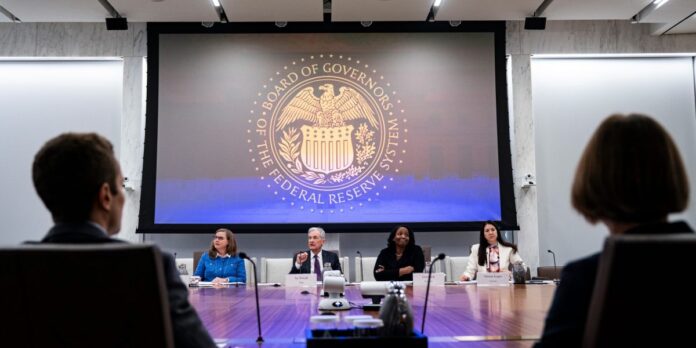A soaring national debt has added plenty of jitters to a Treasury market already reeling from tariff chaos, but there are signs that relief is coming to long-dated fixed income.
For now, however, investors have piled out of long-term U.S. bond funds at the fastest rate since the early days of the COVID-19 pandemic, according to calculations from the Financial Times. Net outflows from funds with government and corporate debt totaled nearly $11 billion in the second quarter, the FT found using EPFR data, a stark contrast from average net inflows of roughly $20 billion over the past 12 quarters.
While such funds make up a small portion of the $28 trillion Treasury market, the exodus shows investors have become increasingly hesitant about long-term U.S. debt, said Miguel Laranjeiro, investment director for municipal debt at Aberdeen Asset Management.
“Usually, that’s because of fiscal policy rather than monetary policy, especially on the long end,” he told Fortune.
Still, he’s optimistic about what proposed regulatory changes could do for the market. Other fixed-income experts, meanwhile, warned not to look too far into the data, which can be volatile based on the timing of redemptions by various institutional investors.
“Near-term fund flows tell us very little other than validating near-term investor sentiment,” Bill Merz, head of capital markets research at U.S. Bank Asset Management, said in a statement to Fortune.
Yields rocked by deficit concerns
There’s no doubt the mood among fixed-income traders has been rocky, though. The yield on the 30-year Treasury, which rises as the market price of the bond declines, climbed above 5.1% in late May, hitting its highest level since the spring of 2007.
Concerns about America’s fiscal outlook have been front and center as Republicans work to pass President Donald Trump’s “big, beautiful” tax-and-spending bill, which the nonpartisan Congressional Budget Office estimates will add $2.8 trillion to federal deficits over the next decade.
The pending legislation proved the final straw for Moody’s, which in May became the last of the three major credit agencies to downgrade the U.S. from its top rung of borrowers. Goldman Sachs, meanwhile, partially validated the White House’s claim that higher tariff revenue and economic growth from tax cuts would slash the debt. But its path remains unsustainable, economists from the investment bank said, as America’s debt-to-GDP ratio approaches its post-World War II high.
Long-term rates have been on a largely slow and steady decline this past month, however. Recent inflation readings have come in relatively cool, perhaps convincing investors they don’t need as much compensation for the risk of surging prices eating into their returns.
But yields rose slightly Friday afternoon after the Commerce Department reported the Fed’s preferred inflation metric ticked higher last month as concerns remain about how tariffs will fuel price growth. And stocks got a brief shock when Trump said he had suspended trade talks with Canada.
Recent volatility has JoAnne Bianco, senior investment strategist at BondBloxx Investment Management, advising clients to avoid long-dated government debt, like 20- and 30-year Treasuries, all together.
“You’re not seeing the long end—the ultra-long end—work as the safe haven that it might have in the past,” she told Fortune.
The return of the banks
Currently, insurance companies and pension funds, who have obligations to pay investors over long periods of time, are among the few “natural investors” in these types of securities, Laranjeiro said.
That may change, however, after the Federal Reserve moved this week to boost bank participation in the Treasury market by loosening capital requirements for major lenders. Industry leaders like JPMorgan Chase CEO Jamie Dimon have argued current restrictions, instituted to prevent a repeat of the Global Financial Crisis, are overly onerous and prevent banks from providing liquidity during times of market stress.
Such changes would not be without precedent, as the Fed also exempted Treasuries and bank reserves from the calculation of so-called supplementary leverage ratio—which curbs the amount of borrowed funds lenders can use to make investments—during the pandemic.
Laranjeiro thinks it’s a prudent move that can make government borrowing less dependent on foreign investors, whose holdings of U.S. debt are declining as a share of the overall market.
Thomas Urano, co-chief investment officer at Sage Advisory, agreed that boosting domestic demand for U.S. debt could offset concerns about the market’s ability to absorb increased issuance from the Treasury.
“I think that’s what the bond market and the investor community [are] kind of pinning their hopes on,” he told Fortune.
And if this change can help make fixed income boring again, investors might come crawling back.


